
Chapter 14
Make a Celtic Spiral
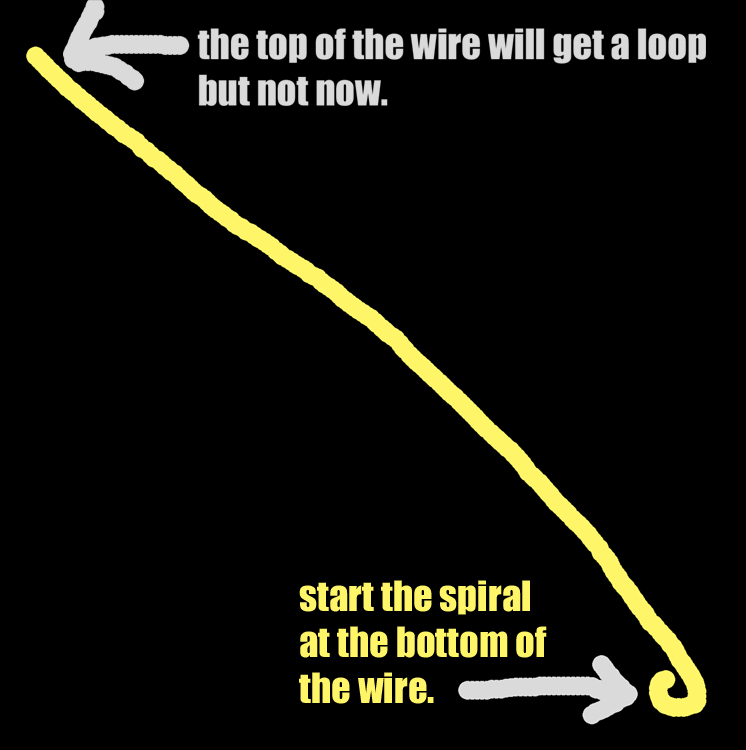
Start winding your spirals at the BOTTOM of the wire.
Start winding your spirals at the BOTTOM of the wire, not the top. You will put a hanging loop at the top later on, but NOT NOW.
Take hold of the wire GENTLY with your needlenose pliers, and slowly and gently COAX the wire into a spiral shape by moving it SIDEWAYS to form the first spiral.
Hammer this spiral before continuing, just flattening it enough to hold its shape.
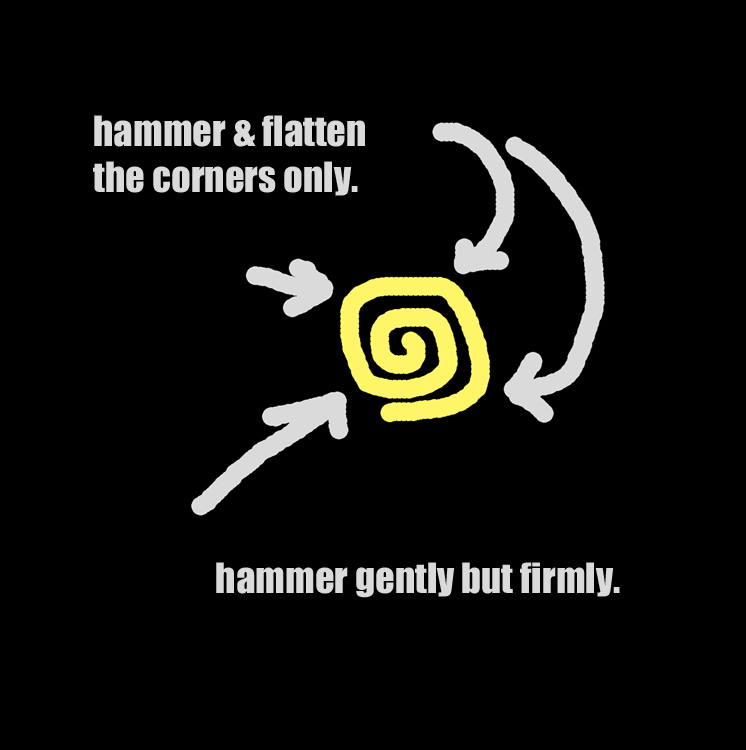
Keep hammering and flattening as you go.
Keep hammering and flattening the CORNERS ONLY as you go. Try to maintain the shape of the original spiral at the center if you can, but don't mangle the wire trying to do that.
It is SO important to not scratch the wire as you work, and if your hands are sweating, take the time to cool off before working with metal wire, or run the risk of rust -- metal tends to oxidize, meaning it mixes with oxygen and rust is the result. Copper goes green or black, and silver just goes black. Gold will oxidize if it is not pure gold, to the degree that the non-gold parts are present.
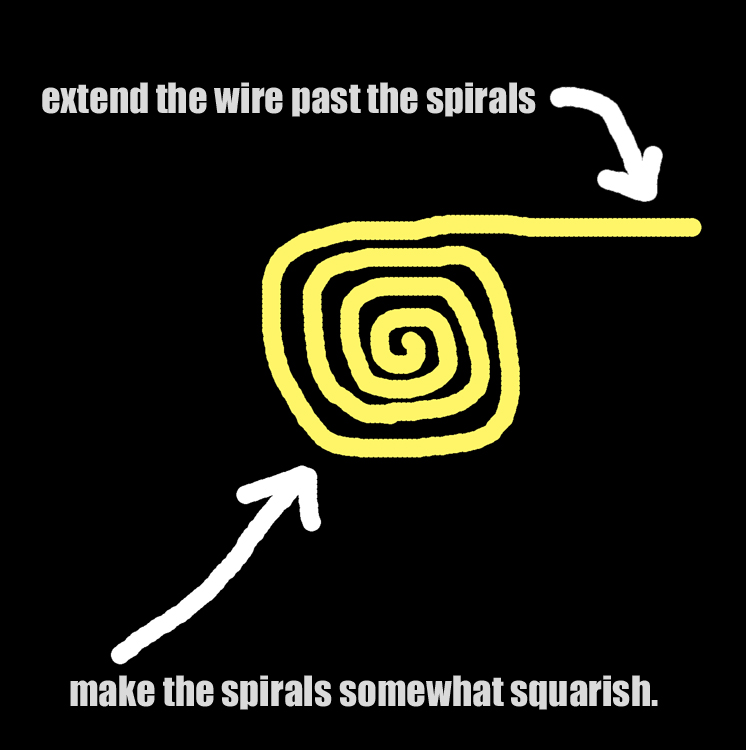
Work outward from the center, and let a small tail extend past the spirals.
Working outward from the center, enlarge the spiral until it is the size and shape you wish, extending the wire past the spirals on the last wind or curve.
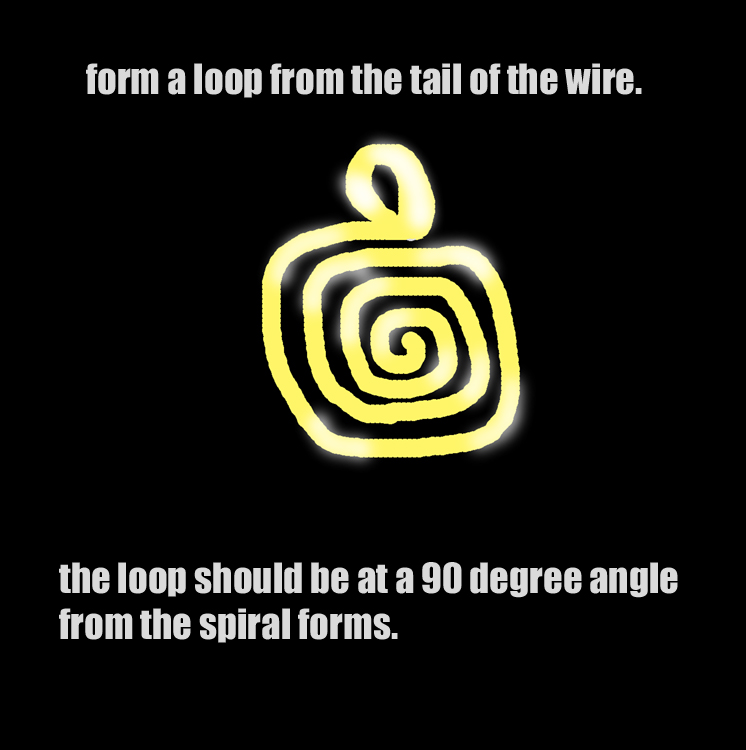
Finishing the spiral should now be easy.
Take the wire tail by the needlenose pliers directly at the mid-point of the top spiral arm, and bend it straight up.
Form the tail into a loop at RIGHT ANGLES to the spiral plane, meaning that the spirals are across, and the loop is forward to back.
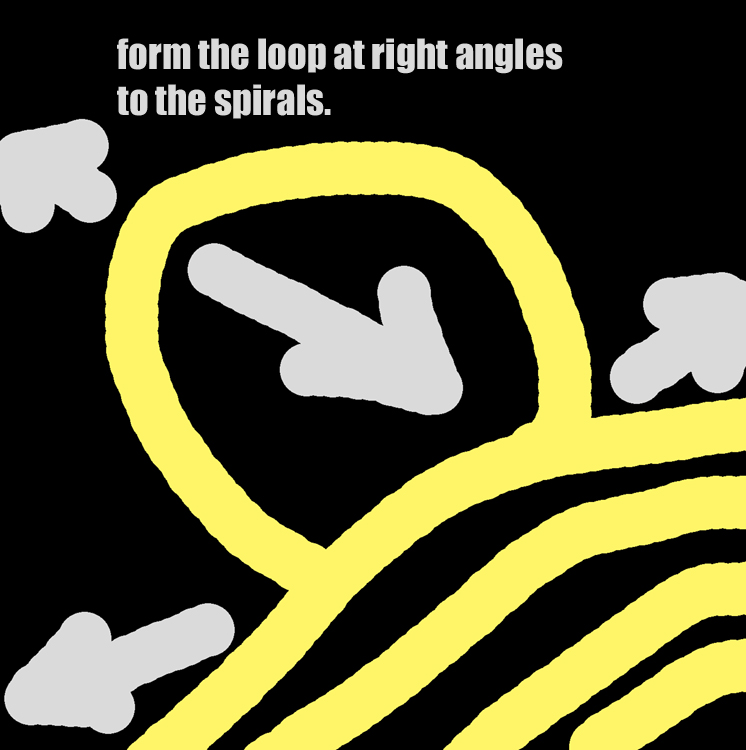
Forming the top bail loop
The top loop is called a "bail" and it receives the neck chain or cord. Make sure that it is at RIGHT ANGLES to the rest of the piece, or it won't sit right when it's worn.
Now it's time to polish and take off any sharp spots, points or edges, then hammer down any areas that are not sufficiently flattened, but don't flatten it too much, or the metal will be too thin, and the edges will become sharp.
Learning how much to flatten the metal is a result of experience personally experienced. Knowing when to stop is a matter of taste, acquired by long practice, as in ANY discipline.

